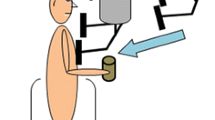Summary
We studied many postural tests with an electromyographical methodology on a group of young men who had a right molar precontact. We compared the results of these tests before and after changing the right plantar arch by placing some plastic on the medial right margin of the homolateral plantar arch (talipes valgus) or on the whole plantar arch (flat foot). We demonstrated the dependence of the occlusal plane on the morphological variations of the plantar arch.
Résumé
Les auteurs ont réalisé une étude électromyographique sur une population de sujets jeunes, de sexe masculin, qui avaient une sur-occlusion des molaires droites. Les tests ont été réalisés avant et après modification de l'arche plantaire droite au moyen de semelles en plastique mises en place sous le bord latéral de la plante (talus valgus) ou sous la totalité de l'arche plantaire (pied plat). II existe une relation entre le plan d'occlusion mandibulaire et les modifications morphologiques de l'arche plantaire.
Similar content being viewed by others
References
Basmajian JV (1980) Electromyography-dynamic gross anatomy: a review. Am J Anat 260: 246–256
Funakoshi M, Fujita N, Takehana S (1976) Relations between occlusal interference and jaw muscle activities in response to changes head position. J Dent Res 55: 684–690
Hairston L, Blanton PL (1983) An electromyographic study of mandibular position in response to changes in body position. J Prost Dent, 49: 2–3
Jankelson R (1984) Electromyography in clinical dentistry. Mary Lynn Pulley, M (Ed), pp. 17–46
Gounon P (1971) Etude de troubles de la déglutition et de la statique vertébrale chez l'enfant. These de médecine, Pitié-Salpétrière
Kawazoe D, Yasuyuki H (1980) Effect of occlusal splints on the electromyographic activities of masseter muscles during maximum clenching in patients with myofascial pain dysfunction sydrome. J Prost Dent 43: 578–581.
Manzoni D, Pompeiano O, Stampacchia G (1979) Tonic cervical influences on posture and reflex movements. Arch Ital Biol 117: 81–110
Valentino B, Mango G, Melito F, Fabozzo A (1985) Electromyography for investigation and early diagnosis of scoliosis. Anat Clin 7: 55–59
Valentino B, Gualdiero L, Esposito LC, Melito F (1986) Electromyographic analysis of some muscles in cycling athletes. J Sports Med 26: 146–148
Author information
Authors and Affiliations
Rights and permissions
About this article
Cite this article
Valentino, B., Fabozzo, A. & Melito, F. The functional relationship between the occlusal plane and the plantar arches. An EMG study. Surg Radiol Anat 13, 171–174 (1991). https://doi.org/10.1007/BF01627980
Received:
Accepted:
Issue Date:
DOI: https://doi.org/10.1007/BF01627980




